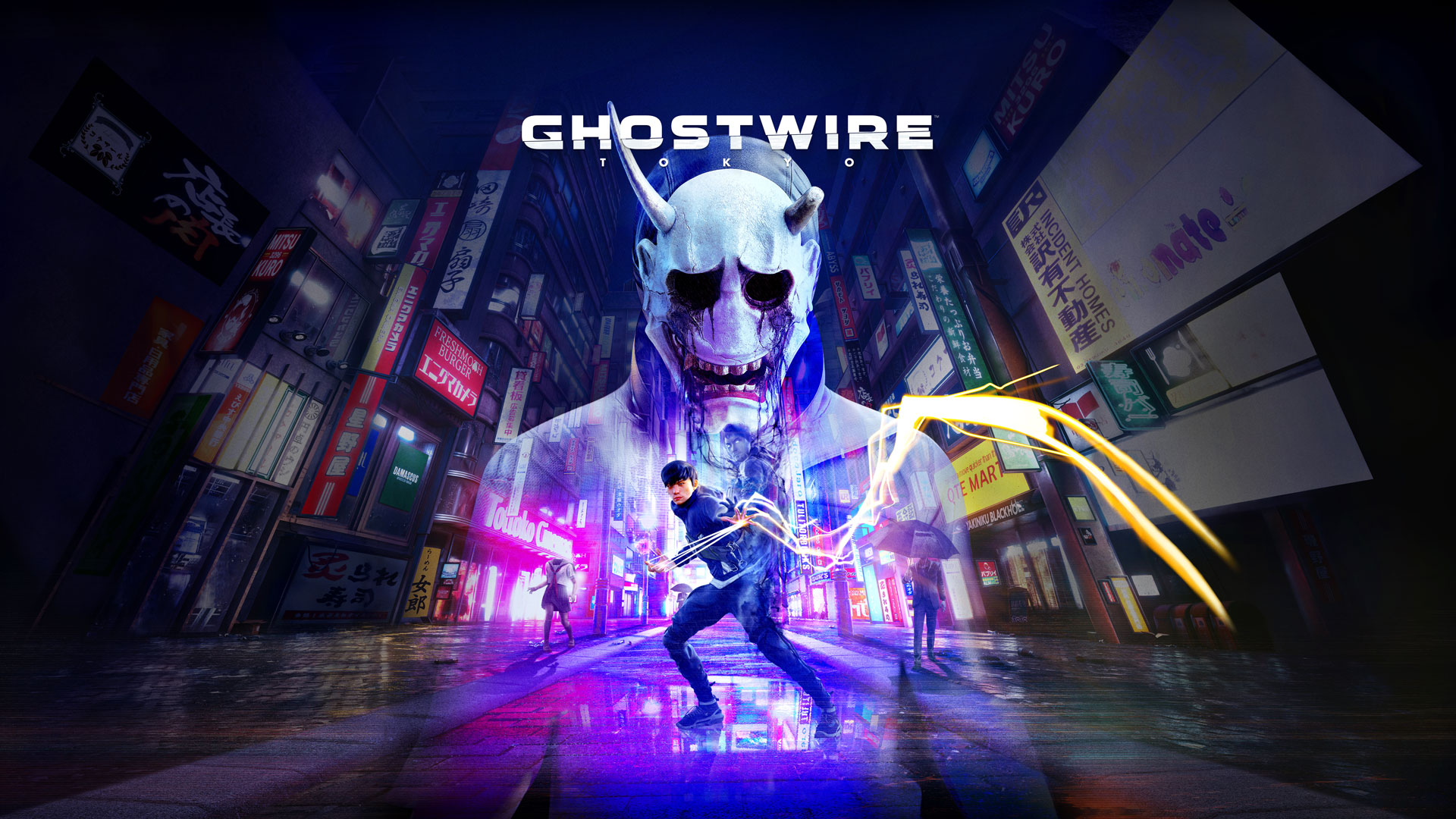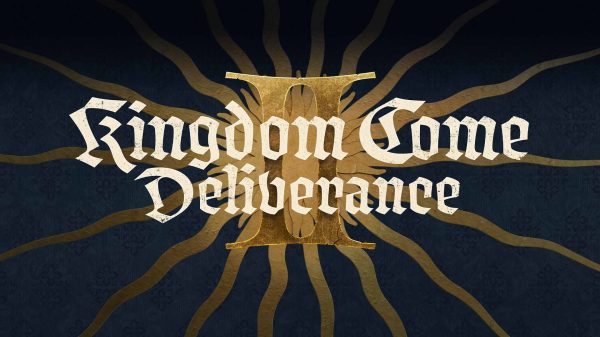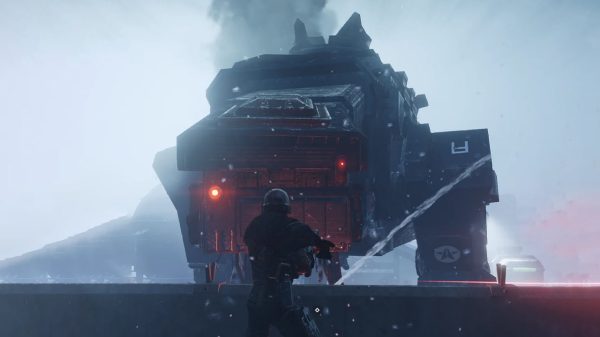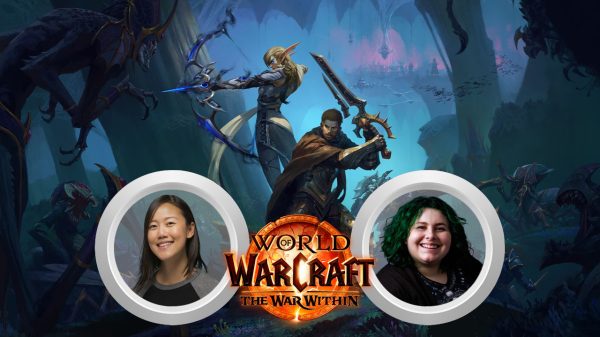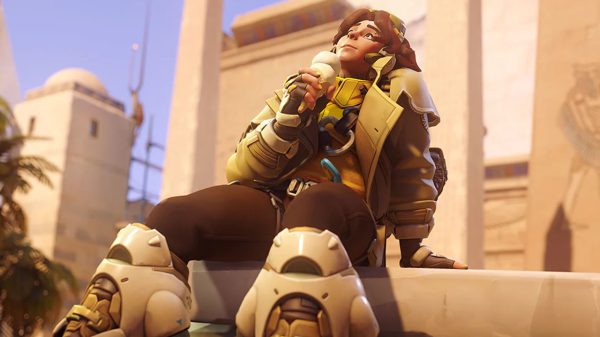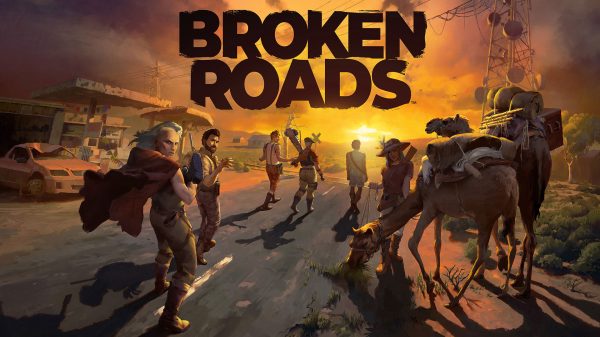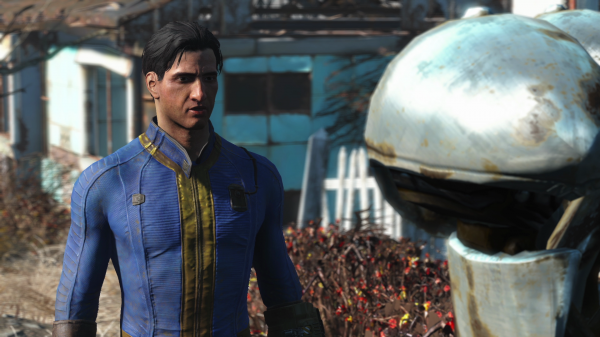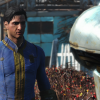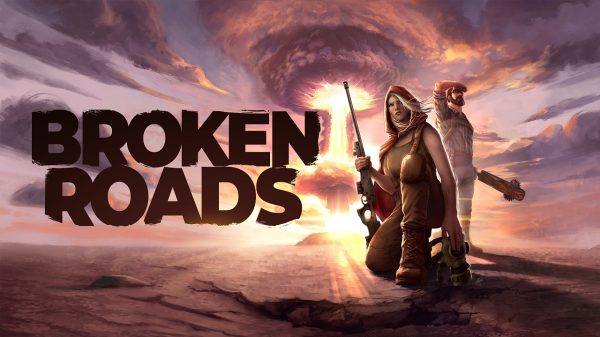Try if you can to imagine a video game with the ghost-hunting duo dynamic of the Mob Psycho 100 manga, the open world structure of the Yakuza franchise, and spellcasting combat that plays like a first-person shooter. Imagine also that it’s developed by the team behind The Evil Within, itself led by the guy responsible for the original Resident Evil games, and published exclusively for PlayStation and PC by fresh Xbox Game Studios inductee Bethesda Softworks. Now if all of that makes it feel like the noodles in your brain are unravelling, try putting yourself in my shoes. I’m supposed to review that.
The setup in Ghostwire: Tokyo is this – you play as Akito, a man left in the wake of an apocalyptic event that sees the entirety of Tokyo’s citizens kick the bucket all at once, their corporeal forms turned to vapor and their spirits left tethered to the mortal plane at the hands of a mysterious figure in a Hannya mask. It just so happens that one of these spirits belongs to a former paranormal investigator named KK who, in an attempt to borrow the body of what he thinks is one of the dead, winds up inhabiting Akito.
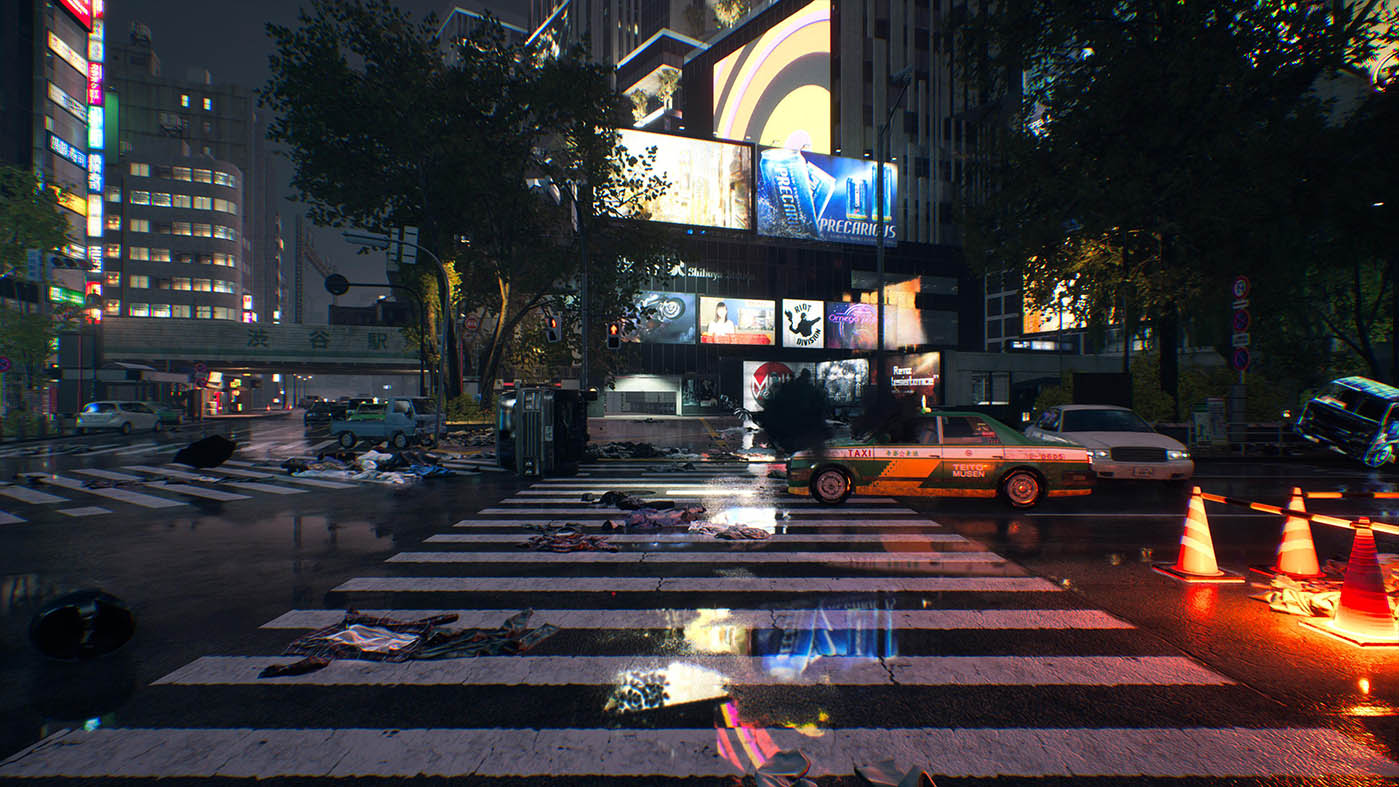
After discovering their shared goal of stopping Mr Hannya Mask, who has taken Akito’s sister for a mysterious ritual and whose ties to KK are made known later, the pair decide to share a body and join forces. Along with tools and messages left behind by KK’s associates, the order of the day is to both thwart the sinister plot to bridge the gap between the mortal realm and the underworld and help as many trapped spirits across the streets of Shibuya in the process. Doing so means traversing the city to cleanse it off a sinister fog, freeing hundreds of thousands of trapped spirits, fighting off invading Visitor spirits and…collecting a whole bunch of stuff.
Comparisons to the Yakuza series might seem too obvious given the setting, but the similarities run much deeper than that. Like those games, Ghostwire’s core narrative path is deceptively slight once the linear and self-contained main missions are removed from its explorable map and glut of side content. Each chapter here could easily have been stitched together into a straightforward eight-to-ten hour experience but instead they’re bookends to another 15-20 hours of optional activities. It shouldn’t work but in spite of itself, much like the Yakuza games, it does.
Although neither Akito nor KK make for particularly compelling characters on their own, as a duo they’re great. The banter between the young and oblivious host human and the spirit of the curmudgeonous paranormal detective that possesses him is endlessly entertaining and surprisingly endearing. There’s a warmth to both of them that comes out as they grow to tolerate one another and though that’s hardly an original arc for a fictional pairing it works especially well here.
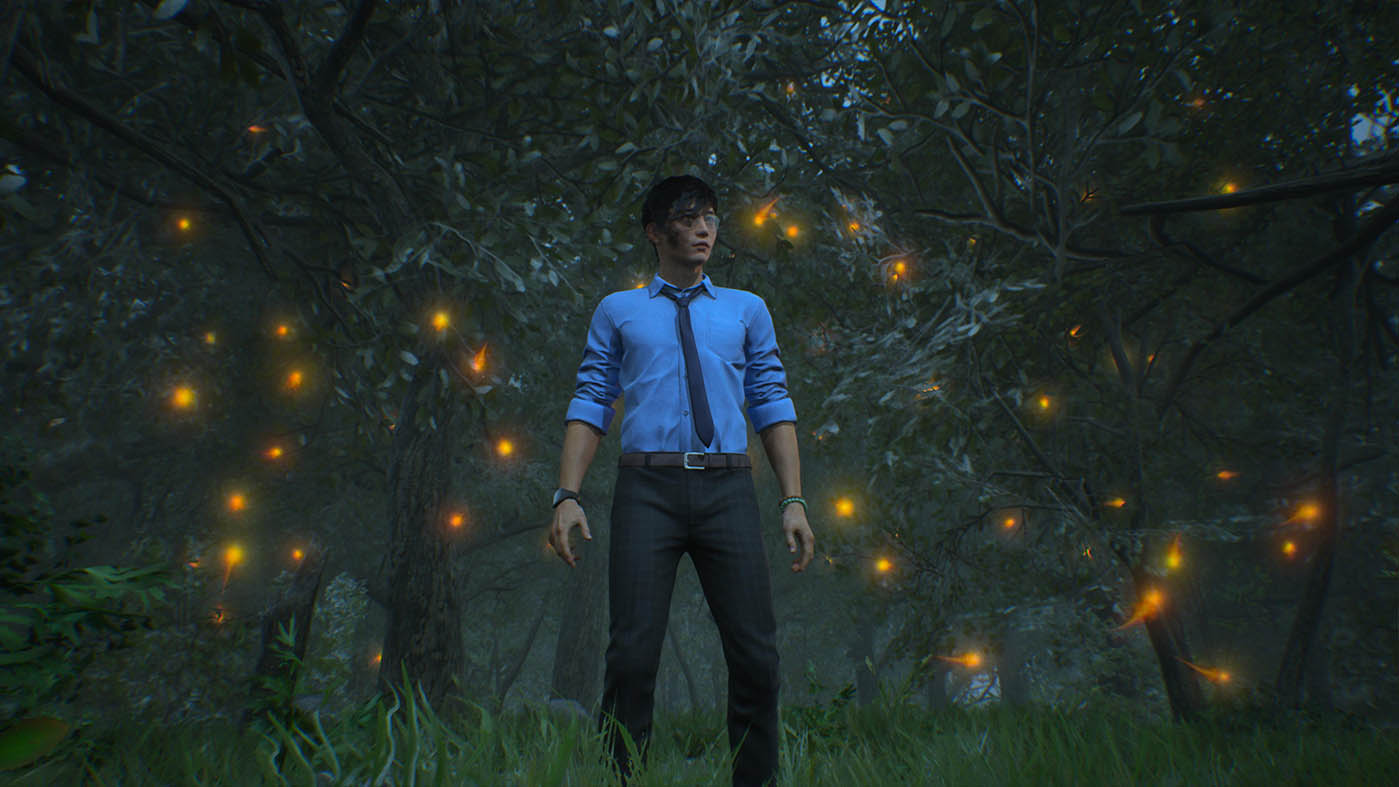
Rather than any immersive simulation or emergent gameplay the attention to detail and commitment to context is what makes Ghostwire’s open world feel special. The inane chatter and whinging you’ll pick up from the thousands of spirits around the streets always fits the area they’re in, ethereal money purses are most often found near businesses, and more well-dressed Visitors are always worth taking down for bigger payouts. Yes, this is a map absolutely littered with icons screaming content here like it’s 2010 again, but each bit of that content has been placed with genuine intent and then given a second coat of lore to match the narrative decor around it. Do yourself a favour though, and turn off all of the map icons that aren’t objective or collectible-related. Shops, payphones and grapple points are in such ample supply that you’ll stumble on them with little effort.
Easily the best bits of content nestled in Ghostwire’s open map are its side quests. There are quite a few and they’re mostly fairly short, but nearly every self-contained optional quest in the game amounts to some kind of unique spirit-hunting scenario. Whether it’s exorcising a haunted office building, riding a ghost train to a parallel plane or ridding an occult content creator’s apartment of a swarm of spectral stans, it almost plays out like a Yokai-of-the-week detective serial that constantly takes you into new and well-crafted areas. Not every side quest is a winner, mind, but quite a few of them are genuinely brilliant thanks to some excellent writing and gameplay flourishes.
It’s admittedly a strange dynamic at times though. If you don’t spend the time to clear off these side quests you’re likely to miss a lot of the work put into establishing Akito and KK’s characters and the growth of their relationship, which’ll no doubt lessen the impact of the game’s ending. But by the same token the longer you go between progressing main story missions the more the already-thin core narrative is stretched to its limits. The whole thing is offbeat and self-aware enough that it kinda gets away with it, but if you’re here looking for a satisfying payoff you might be disappointed. The strengths really do lie in the effort that Tango has put into the game’s world building and atmosphere – there’s a stronger sense of place in this post-mortem take on Tokyo than most other game worlds whose populations are still alive.
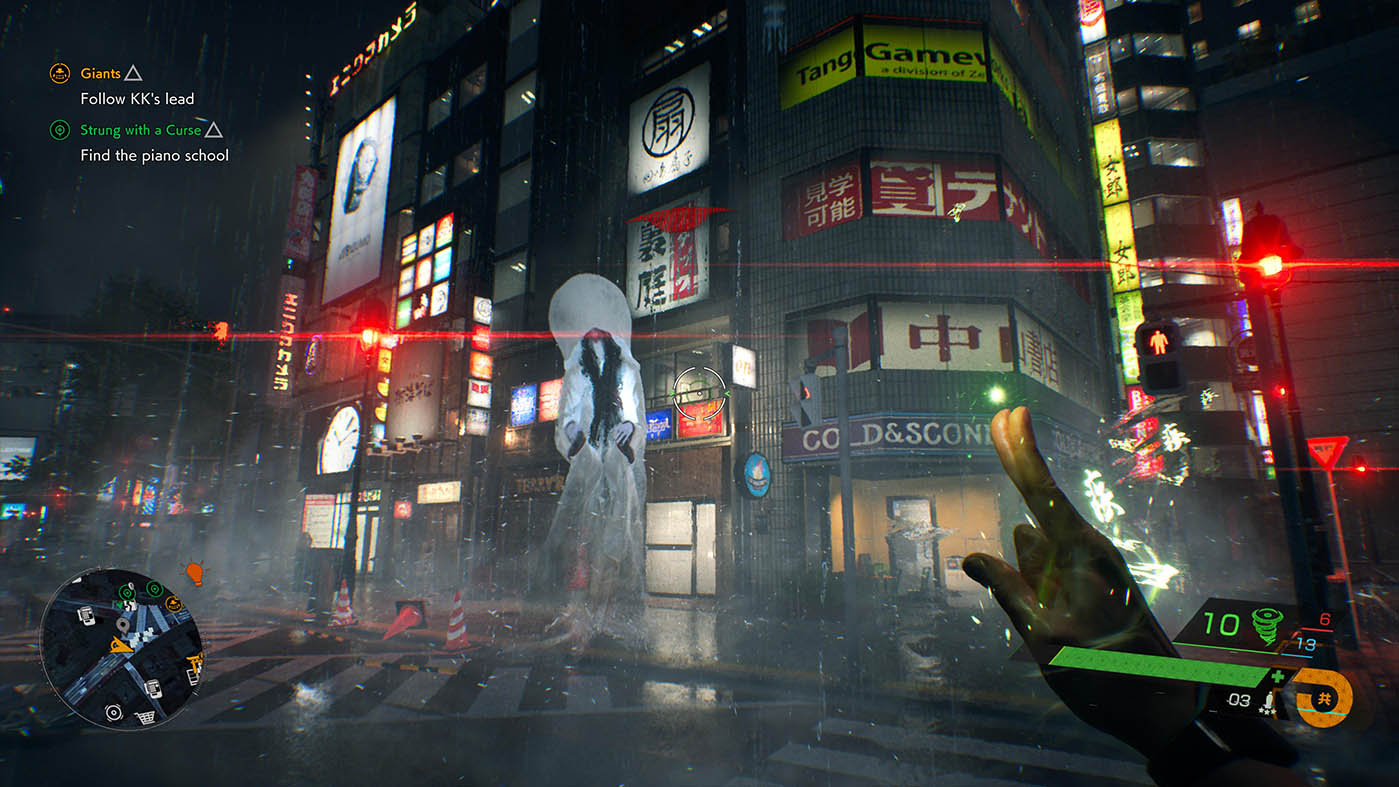
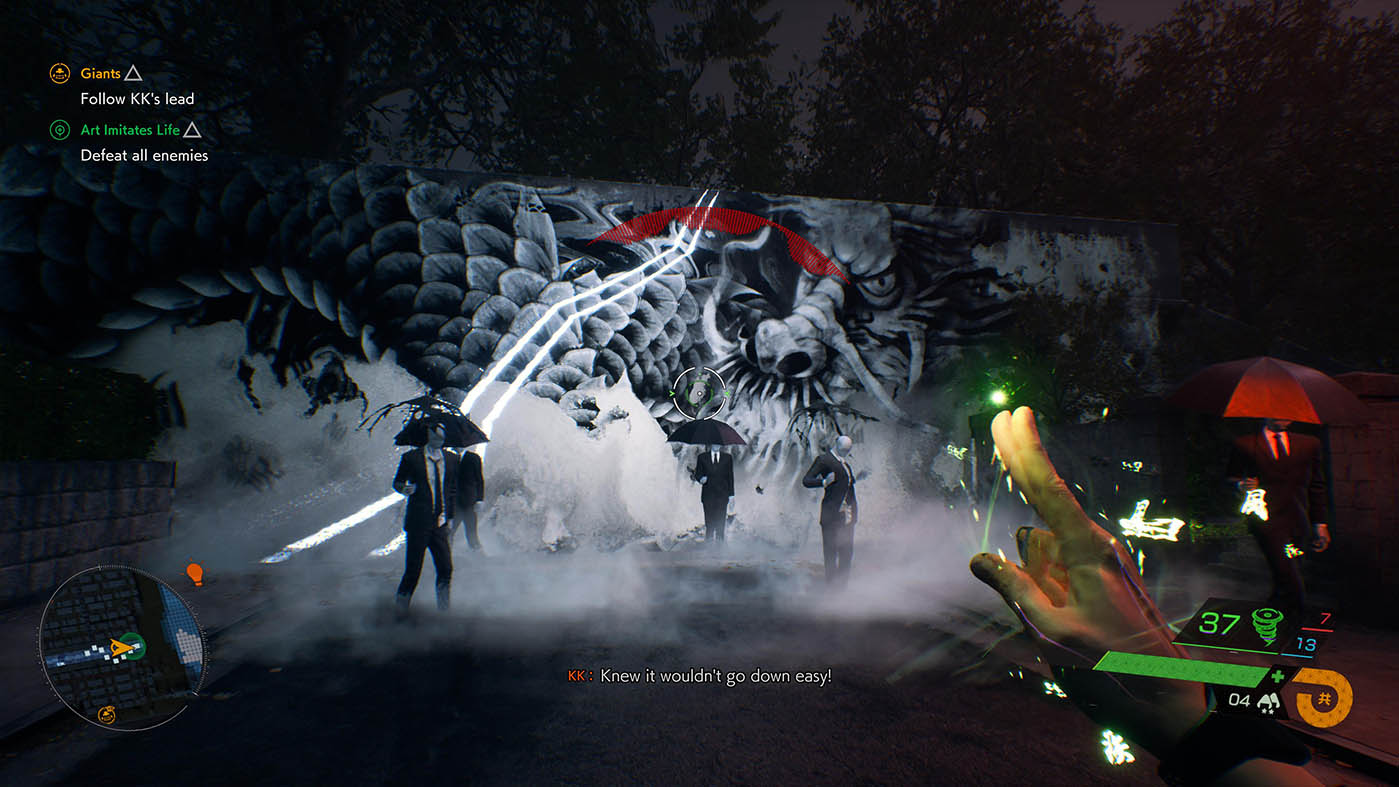
Aside from exploring Shibuya and sucking up ghosts like you’ve just donned a pair of green overalls, a big part of the Ghostwire: Tokyo experience is squaring off against Visitors, the spiritual army of the Hannya Mask that roams the streets and congregates around key control points in their war on humanity. Thanks to the power afforded by his otherworldly co-pilot, Akito does this by firing off magic attacks through hand signs which occupy a trio of damage types that aren’t too dissimilar from a first-person shooter. Wind attacks are like rapid-fire pistol shots, water’s short range and wide spread lends it a shotgun-like quality while throwing explosive balls of fire is, well, like throwing explosive balls of fire.
Although these three spell types can be further upgraded to have bigger and better effects, there’s no getting around the fact that they start to wear thin before long. The Visitors themselves are a varied bunch both in their visual designs and behaviours, but there’s a distinct lack of interplay between different enemies and element types that means you never really have to think about your approach to any given situation. Aside from mastering crowd control to expose each enemy’s spiritual core in unison and pull off a very satisfying finishing move, you’re pretty well safe to just go in finger-guns blazing every time and hope for the best.
What little variety there is comes in the form of some light stealth and a (somewhat overpowered) bow that are especially useful when later, more powerful Visitors start making a habit of decoupling Akito and KK which means you’re left with very few ethereal abilities until you manage to re-merge. As you earn experience and level up you’ll gain points to pump into a suite of skills and upgrades, but aside from a scant few essential additions to your combat and traversal arsenal the bulk of these just improve what you’re already given which drastically flattens to the power climb into more of a power walk. It’s a touch disappointing because fighting Visitors is fun and visually exciting all the way through, the game just runs out of new tricks too quickly.
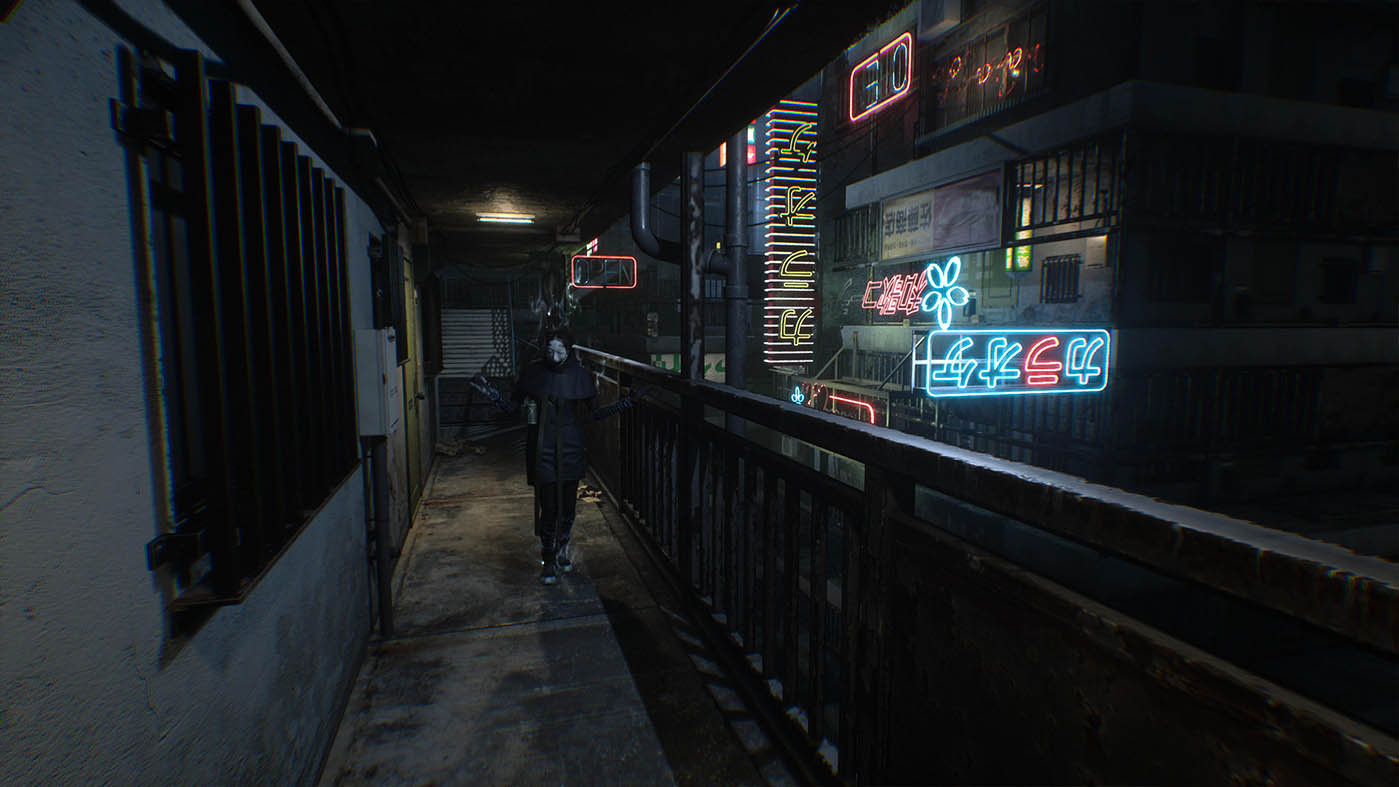
The DualSense controller’s haptics and the adaptive trigger implementation, though not terribly unique, contribute to a lot of the dynamism both in and out of combat. I found myself getting oddly excited every time it would rain out on the Shibuya streets (which it does often) because it meant I’d get to feel the droplets pitter-pattering in my hands. KK’s dialogue coming through the controller’s inbuilt speaker as I wandered around also did a very decent job of making it feel like his voice reached beyond the confines of the game world, it’s probably one of my favourite use cases of the concept since No More Heroes‘ Wiimote phone calls back in 2007.
The sense of atmosphere in general is one of Ghostwire: Tokyo’s greatest assets, adding to the attention to detail in its worldbuilding with a dense, lush and gorgeous-looking representation of Shibuya. It truly feels like a world left behind in an instant with cars and clothes strewn about the rain-soaked streets, pools of water reflecting the still-lit neon billboards and shopfronts whose music can still be heard playing inside as you stroll past. Lighting, fog and particle effects are a particular highlight, especially when the action heats up and you’re flinging spells at enemies as they explode into vapour. The console version offering ray tracing in both a high-res 30fps mode as well as a high performance option is nice to see, as proper reflections and detailed lighting make a world of difference to the game’s overall look.
Aside from ray tracing and better resolution/performance though, it really doesn’t feel like there’s much here that couldn’t have been done on the PS4. Load times when fast travelling or transitioning to building interiors are nice and quick, but having those transitions at all is jarringly old school, and the level of detail draw-in is much more noticeable than I’d expect from a new-gen console exclusive. There’s definitely a great looking game here but there’s just not a lot that justifies leaving the last generation behind which is a shame both for anyone hoping to see the new hardware flexed and anyone wanting to play the game that doesn’t own a PS5 or gaming PC.
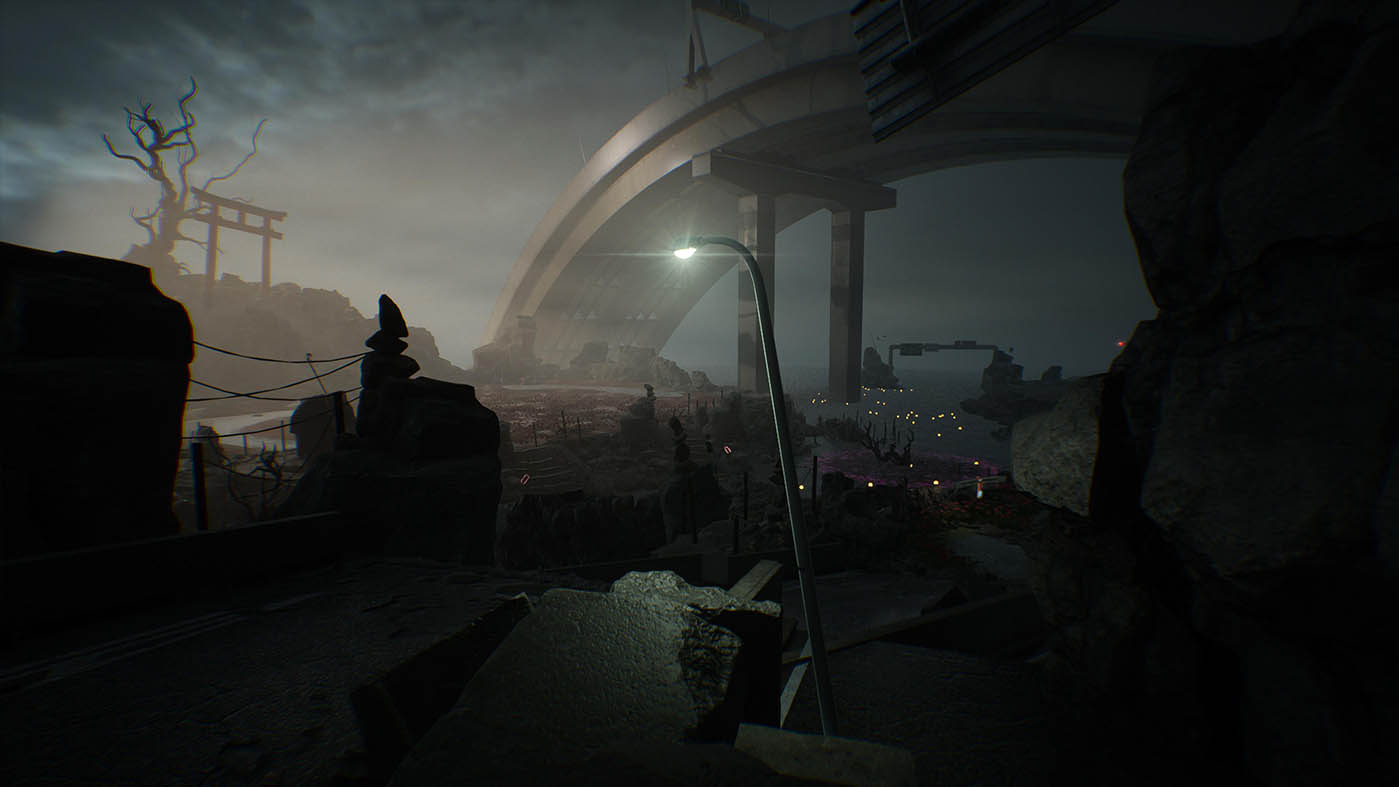
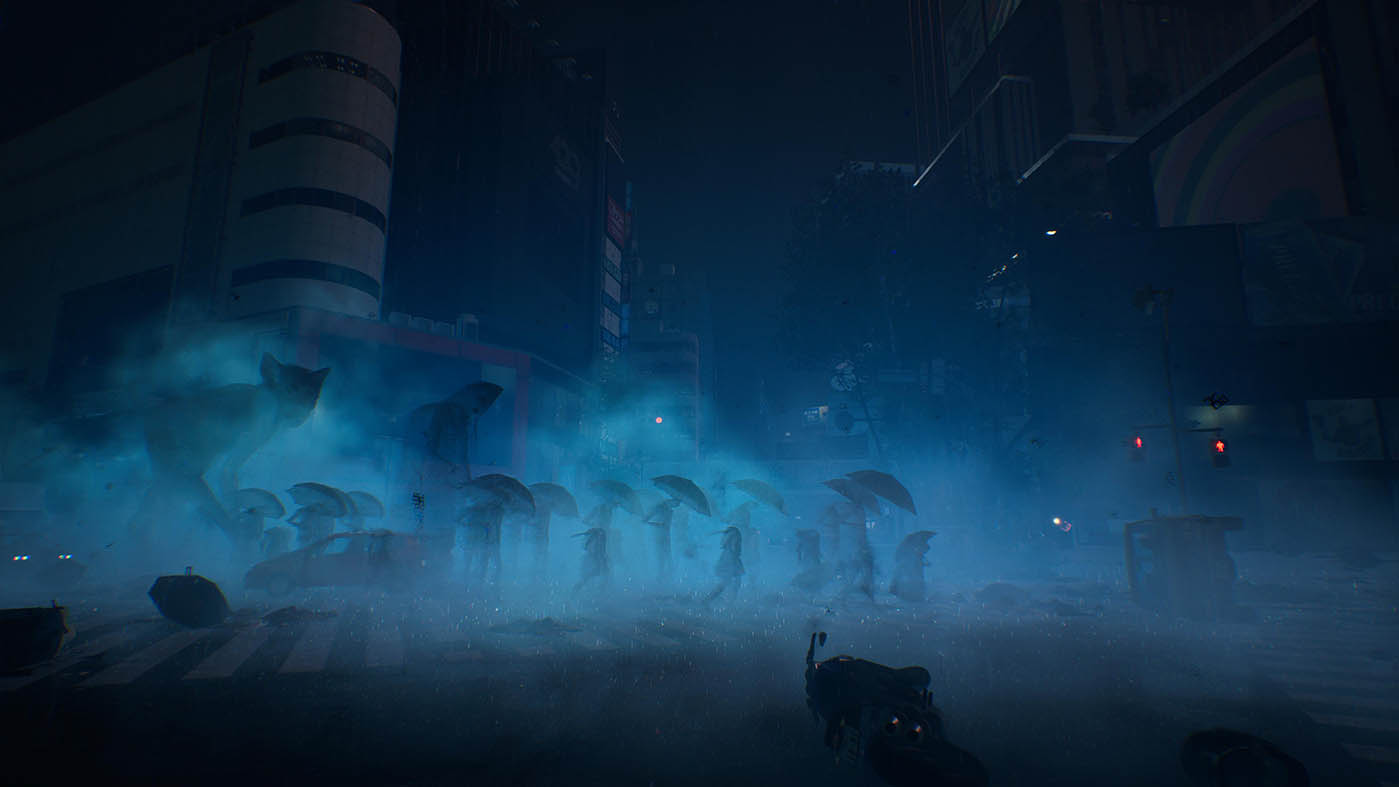
By the time I rolled credits on Ghostwire: Tokyo and was offered the choice to roll back to the open world and collect the remaining 140,000-odd souls that I still had left to save (for what I assume is a better ending) or start a New Game Plus with most of my gear intact, I wondered if I had the stomach to spend dozens more hours just wandering around and scooping up spirits. As soon as I was dropped back onto the Shibuya streets though I realised I definitely wasn’t done just yet. There’s just something about this game that makes me want to see more, even when I know it’s probably more of the same.
Final Thoughts
I know in my heart that Ghostwire: Tokyo commits a multitude of game design sins. I know that it’s stuffed to the gills with repetitive, tedious busywork. I know that its core narrative is paper-thin and its combat and player progression are far too shallow for its runtime. By some indecipherable logic though, I keep going back to it. The simple explanation would be to say that it’s greater than the sum of its parts, that the well-realised world and addictive ghost-hunting gameplay loop outshine its flaws. I think the real answer probably lies between that and Tango Gameworks going too deep and discovering some dark and cursed game design magic. “It’s spooky”, indeed.
Reviewed on PS5 // Review code supplied by publisher
Click here for more information on WellPlayed’s review policy and ethics

- Tango Gameworks
- Bethesda Softworks
- PS5 / PC
- March 22, 2022 (PS5 Deluxe Edition) / March 25, 2022



Kieron's been gaming ever since he could first speak the words "Blast Processing" and hasn't lost his love for platformers and JRPGs since. A connoisseur of avant-garde indie experiences and underground cult classics, Kieron is a devout worshipper at the churches of Double Fine and Annapurna Interactive, to drop just a couple of names.





